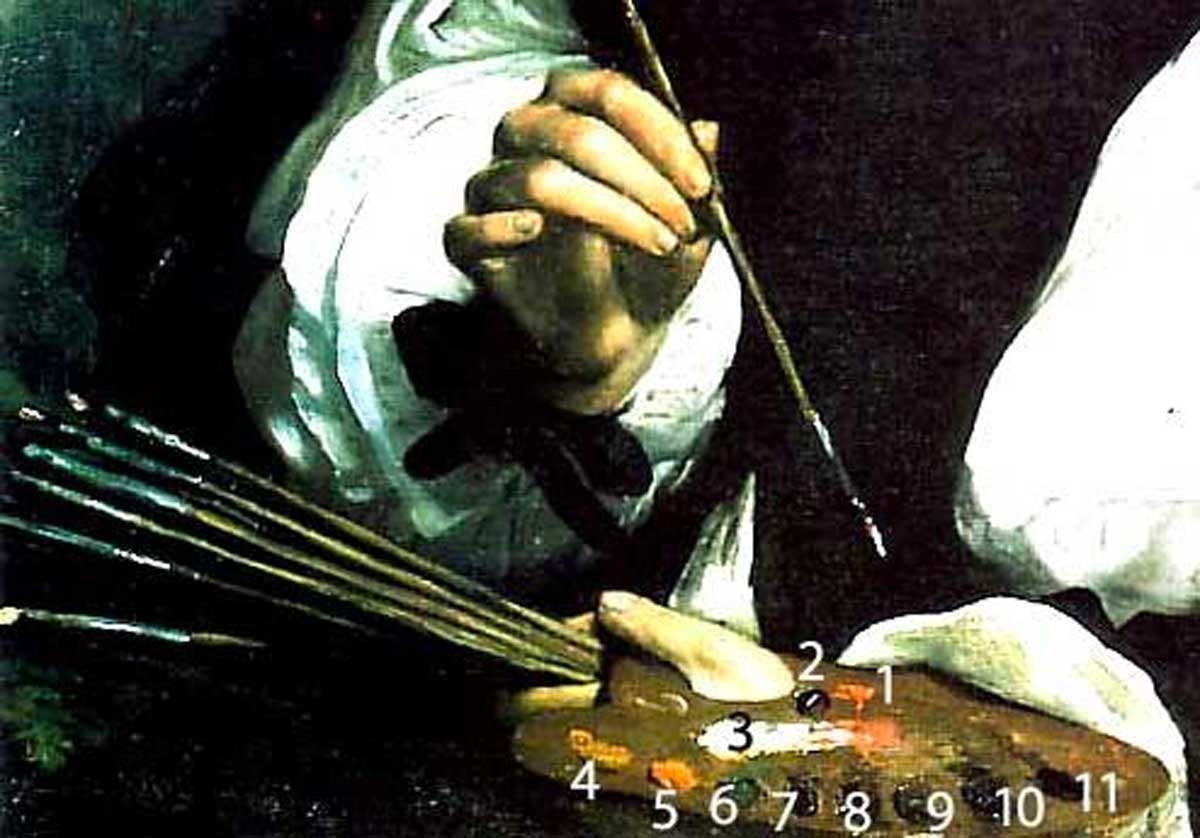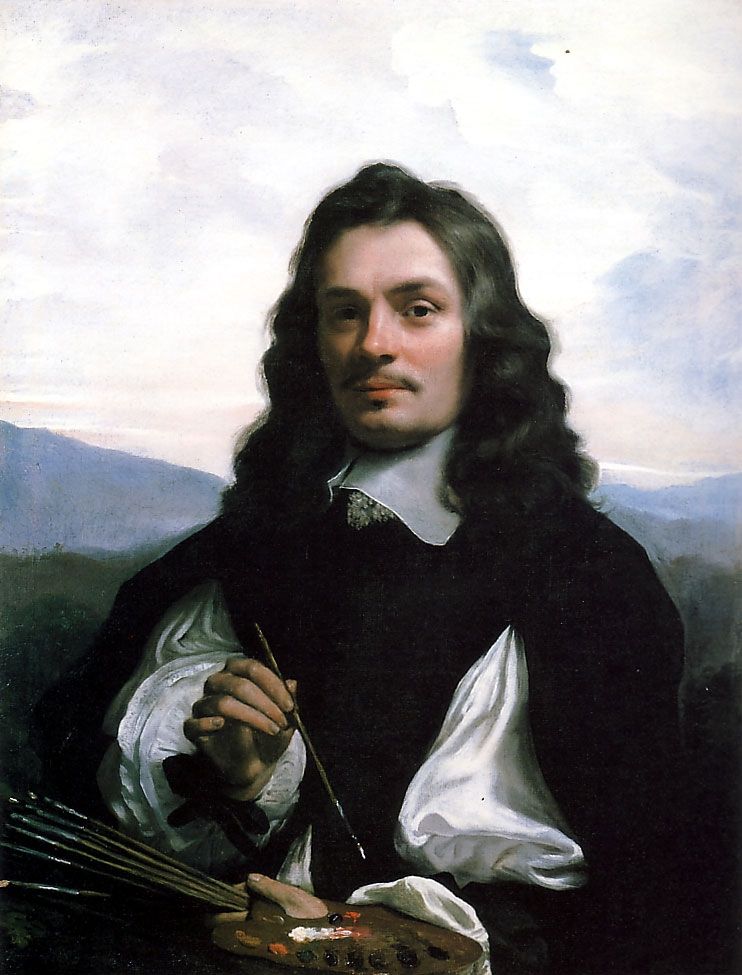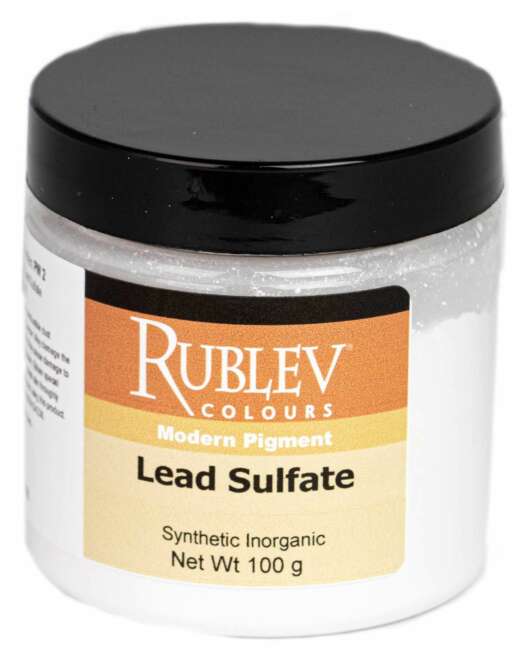
It is no coincidence that the palette in the self-portrait by Michael Sweerts is practically identical to the palette described in detail by Roger de Piles in his 1684 book Les Premiers Elémens de Peinture Pratique. Sweerts was a contemporary of de Piles, and it appears that his palette was laid out in the manner practiced throughout western Europe in the 17th century.
The pigments on the palette held by Sweerts in his self-portrait were analyzed in detail in 1954 by Richard Buck and R. J. Gettens. They are identified as 1) vermilion, 2) red lake (possibly madder lake), 3) white lead, 4) yellow ochre, 5) red ochre or Venetian red, 6) terra verte, 7) a warm brown lake (stil de grain or brown pink?), 8) a cool brown pigment (unidentified, but likely a brown iron oxide earth pigment), 9) raw sienna, 10) Vandyke brown (or carbon black), and 11) an unidentified pigment that was lost.
Although we do not see the same arrangement of columns of shadow and half-tints prescribed by de Piles in his book, we do see mixes of vermilion and lead white like those written by de Piles.

Michiel Sweerts (Flemish, Brussels 1618–1664 Goa [India]), Self-Portrait, ca. 1656, Oil on canvas, 37-1/4 x 28-7/8 in. (94.5 x 73.4 cm), Allen Memorial Art Museum, Oberlin College, Oberlin, Ohio.
Sweerts was baptized in Brussels on 29 September 1618. By the mid-1640s, he lived in Rome, where he remained until at least 1652. Back in Brussels, Sweerts opened an academy for life drawing in 1656 and became a member of the St. Luke's Guild in 1659. During a brief stay in Amsterdam in about 1660-61, he became a lay brother in the Lazarist Société des Missions Étrangères and joined their mission to the Orient in late 1661. He was dismissed from the mission in 1662 because of his mental instability and ungoverned zeal and died at the Portuguese Jesuit colony at Goa in 1664.
In addition to portraits, Sweerts painted genre scenes and history paintings that combine stark chiaroscuro and blunt realism with a serene, almost classical simplicity.




